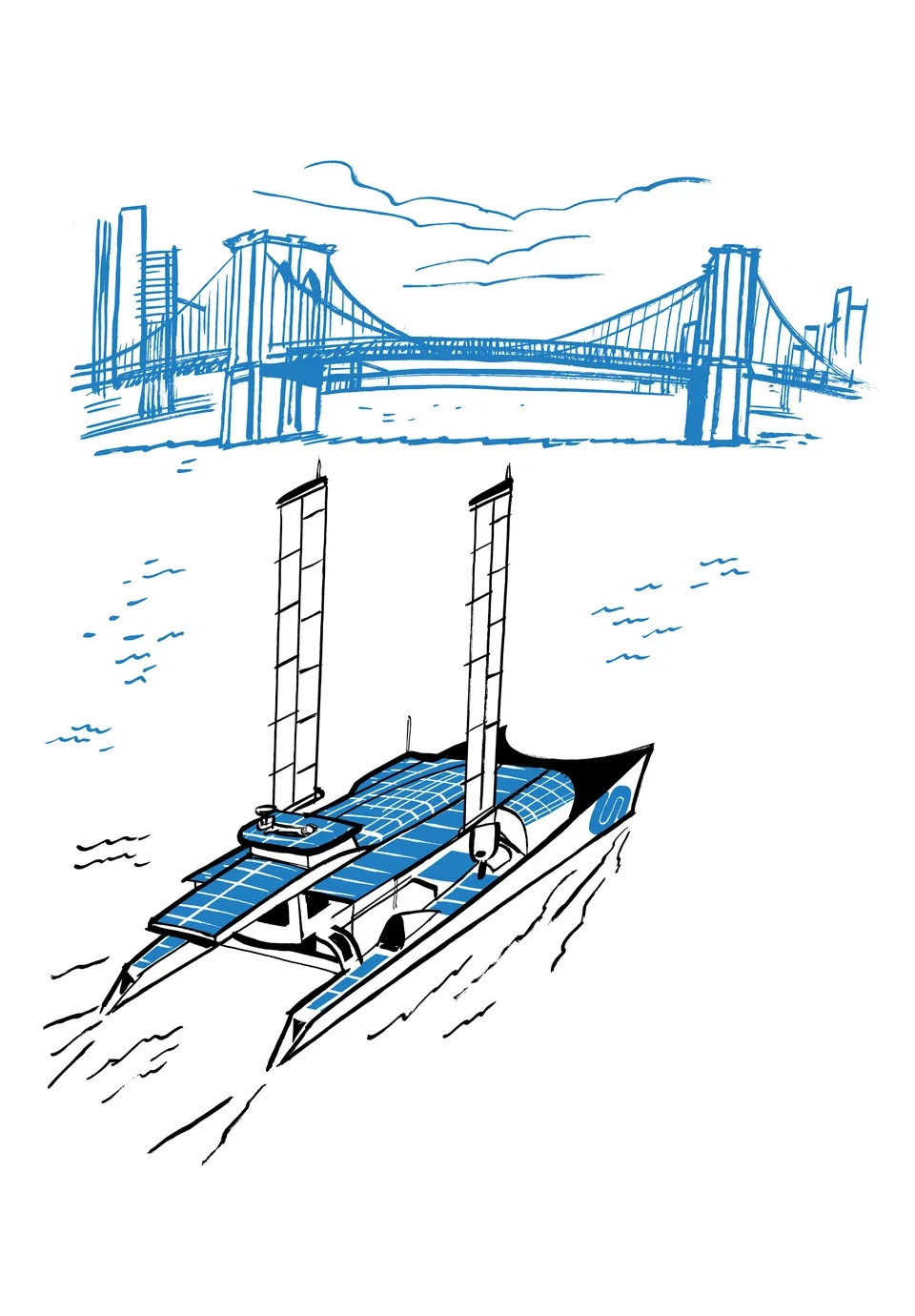Our thanks to Adam Iscoe, writing in the New Yorker, for this:
An Around-the-World Eco-Voyage Makes a Pit Stop Near Wall Street
Energy Observer, a ship equipped with solar panels and a hydrogen fuel cell, has spent the past seven years circumnavigating the globe, powered by sun, water, and salads.
One phrase that describes New York’s waterways is “diesel-powered”: supersized container ships, megayachts, oil tankers, garbage barges. But not every ship that comes to town is on a Greenpeace watch list; there are also schooners, plus the odd outrigger canoe. And recently a hundred-foot-long former racing catamaran from France, which had been retrofitted with solar panels and a hydrogen fuel cell, docked near Wall Street. The vessel, known as Energy Observer, resembled a sperm whale that had been wrapped in roughly ten thousand photovoltaic cells. She made a two-week pit stop during a seven-year, around-the-world voyage, gathering some fresh vegetables, before setting sail again, at dawn.
“We’re having a little issue with the batteries this morning,” Beatrice Cordiano, an Italian scientist aboard the craft, said on the day of departure. Energy Observer was to travel up the East River, through Long Island Sound toward Massachusetts, and across the Atlantic, in the direction of the French coast; her more than sixty-two-thousand-mile journey would return to where it began, in 2017, in Saint-Malo. “It’s a problem that we usually do not have,” Cordiano said of the batteries. Just about everything on the vessel—two electric engines, a washing machine, the Starlink satellite hookup, a seawater desalinator, two refrigerators, several MacBooks, a G.P.S. navigation system, lights—is powered by four lithium-ion batteries, which are recharged by a couple of thousand square feet of solar panels, and a hundred and thirty-seven pounds of hydrogen gas. The gas, which is produced using seawater, is stored in eight pressurized tanks.
Here’s how it works: In the hulls, seawater is desalinized and purified, before an electrolyzer splits H2O into hydrogen and oxygen. After that, the hydrogen gas is converted into electricity, via a custom-built Toyota fuel cell—a version of the technology inside the company’s hydrogen-powered sedan, which emits water vapor instead of exhaust.
Cordiano, who wore a blue beanie and a retroreflective sailing jacket, and had the chapped lips of a woman who had been at sea for some two years, went on, “If there’s no sun, no wind, no nothing, we can do continuous sailing for one week with the hydrogen that we have.” But setting sail was practically impossible without working batteries. Luc Bourserie, one of the ship’s engineers, grabbed some pliers and shouted, “This is high-voltage work,” before disappearing into a hull.
After further shouting (and swearing), Energy Observer’s electric motors puttered to life, and the vessel departed the marina. Marin Jarry, a merchant marine turned eco-evangelist, sat on the bridge, sipping espresso from a mug that read “the captain’s word is law” and smoking Marlboro Golds. As Jarry lifted two sails—or “ocean wings,” as they’re known on board—with the push of a button, he glanced at the nearby Statue of Liberty and said, “A French present.” Downstairs, another crew member muttered, “It’s underwhelming, if you ask me.”…
Read the whole story here.
